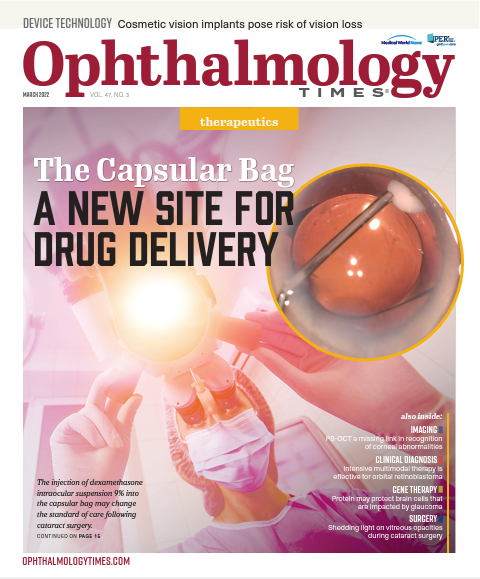Publication
Article
Digital Edition
Cosmetic iris implants pose high risk of vision loss
Author(s):
Despite inherent issues, clinicians still perform the procedure
Reviewed by Jorge L. Alio, MD, PhD
Cosmetic iris implants pose serious risks and are strongly discouraged, according to Jorge Alio, MD, and Francesco D’Oria, MD, both from Vissum Alicante Miranza Group and the Miguel Hernández University of Elche in Alicante, Spain.

However, despite the potential risks, the surgeries are still performed. The currently available models are the NewColorIris (Kahn Medical Devices) and BrightOcular (Stellar Devices).
The NewColorIris, a silicone iris diaphragm with 6 rounded flaps in the periphery to hold the device in place, has a diameter that ranges from 11 to 13 mm and a pupillary aperture of 3.5 mm and thickness of 0.16 mm. The BrightOcular, which is held in the eye by 5 triangular flaps in the periphery, comes with diameters ranging from 11.5 to 13.5 mm and thicknesses of 0.16 and 0.18 mm; the posterior face has grooves to facilitate aqueous flow, the authors reported.
Alio and D’Oria conducted a retrospective study of the medical records of 5 patients (10 eyes; age range, 27-46 years) who had received 1 of the devices (2 with NewColorIris and 8 with BrightOcular). The patients had been referred to the Vissum Instituto Oftalmológico de Alicante for complications associated with the latest models of the implants, which had been available for 6 years.
The authors reported that all the devices had been explanted from 1 to 60 months after the surgeries. The mean endothelial cells density was 848 ± 227.5 cells/mm2. Corneal transplantations had to be performed in 30% of eyes; in other words, 2 eyes had a Descemet membrane endothelial keratoplasty and 1 eye had a penetrating keratoplasty. Three other patients were advised that they would need a corneal transplant. Nine of the 10 eyes developed ocular hypertension, and a filtrating surgery was needed in 2 cases.
Early development of cataract was a common complication, with 40% of the patients who were a mean age of 36 years requiring cataract surgery.
A representative case was that of a 37-year-old woman who had a cosmetic iris implanted in both eyes and returned 2 years later with problems in her left eye. This patient had a dramatic endothelial cell loss of 1163 cells/mm2. Following referral, iris atrophy was seen superiorly. The endothelial cell density was relatively conserved after explantation at 1054 cells/mm2, the investigators said. The implant of the other eye also had to be removed.
Neither of these commercial devices had been FDA approved or received a Conformité Europëenne mark, but they continued to be implanted. Newer models have not been improved and cause the same complications to develop as the previous models.
“Patients with cosmetic iris implants have a high risk of definitive loss of vision and other serious complications that should be described to patients before implantation,” Alio concluded. “Implantation of cosmetic [iris] implants should be considered today as malpractice in the light of available evidence.”
Jorge L. Alio, MD, PhD Francesco D'Oria, MD
E: jlalio@vissum.com
This article is adapted from Alio and D’Oria’s presentation at the 2021 American Academy of Ophthalmology annual meeting in New Orleans, Louisiana. Alio and D’Oria have no financial interest in this subject matter.

Newsletter
Don’t miss out—get Ophthalmology Times updates on the latest clinical advancements and expert interviews, straight to your inbox.




